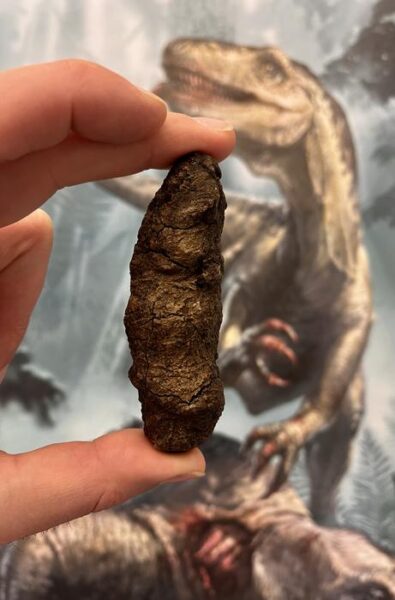A groundbreaking analysis of fossilized droppings has unveiled the step-by-step process of how dinosaurs evolved from minor players to Earth’s dominant land animals, challenging long-held assumptions about their rise to power.
Published in Nature | Estimated reading time: 4 minutes
Scientists from Uppsala University and an international team have meticulously examined over 500 fossilized droppings, bite marks, and food remains spanning 30 million years to reconstruct how dinosaurs gradually took control of ancient ecosystems. Their findings in Poland’s rich fossil beds reveal that dinosaurs’ path to dominance followed five distinct phases, each marked by new feeding strategies and adaptations.
The research team, led by Dr. Martin Qvarnström and Dr. Grzegorz Niedźwiedzki, used advanced synchrotron imaging to peer inside fossilized droppings, known as coprolites, preserved from the Late Triassic to Early Jurassic periods (230-200 million years ago). These ancient specimens contained remarkably preserved remains, including intact beetles, fish bones, and plant materials.
The study identified five key phases in dinosaurs’ rise to power. The first dinosaur relatives were small, opportunistic omnivores that appeared around 230 million years ago. These were followed by the emergence of early predatory dinosaurs, then a diversification of meat-eaters alongside the first plant-eating ornithischians. The fourth phase saw the arrival of large herbivorous sauropodomorphs, culminating in a final explosion of diversity that established dinosaurs’ dominance.
Analysis of early sauropod dinosaur droppings revealed an unexpected discovery: beyond tree ferns and various plants, the specimens contained significant amounts of charcoal. The researchers suggest this charcoal consumption may have served to neutralize toxins from their plant-heavy diet.
The research reveals that climate change played a crucial role in dinosaurs’ ascent. As the supercontinent Pangea drifted northward, the Polish region transformed from an arid environment to a more humid one. This shift triggered substantial changes in plant life, creating new opportunities that dinosaurs were uniquely equipped to exploit.
The research team’s findings indicate that dinosaur success stemmed from a complex interplay of factors. Rather than simply outcompeting other animals, their rise appears driven by environmental changes combined with remarkable dietary adaptability, particularly regarding new plant resources.
“Unfortunately, climate change and mass extinctions are not just a thing of the past. By studying past ecosystems, we gain a better understanding of how life adapts and thrives under changing environmental conditions,” says Qvarnström.
“The way to avoid extinction is to eat a lot of plants, which is exactly what the early herbivorous dinosaurs did. The reason for their evolutionary success is a true love of green and fresh plant shoots,” Niedzwiedzki concludes.
Glossary
- Coprolite
- Fossilized dung that preserves evidence of ancient animals’ diets and feeding behaviors.
- Synchrotron Imaging
- Advanced X-ray technology that allows scientists to see inside fossils without destroying them.
- Sauropodomorph
- A group of typically large, long-necked herbivorous dinosaurs that includes the ancestors of later sauropods.
Test Your Knowledge
How many phases of dinosaur evolution did the researchers identify?
The researchers identified five distinct phases in dinosaurs’ rise to dominance.
What unusual material was found in early sauropod dinosaur droppings?
Charcoal was found in their droppings, possibly consumed to neutralize plant toxins.
How did climate change affect dinosaur evolution in the study area?
The region shifted from arid to humid conditions as Pangea moved northward, creating new plant communities that dinosaurs were able to exploit.
What evidence suggests that early dinosaur success was more complex than simple competition?
The study shows their rise involved multiple factors: environmental changes, dietary adaptability, and their ability to exploit new plant resources, rather than just outcompeting other animals.
Enjoy this story? Subscribe to our newsletter at scienceblog.substack.com.


